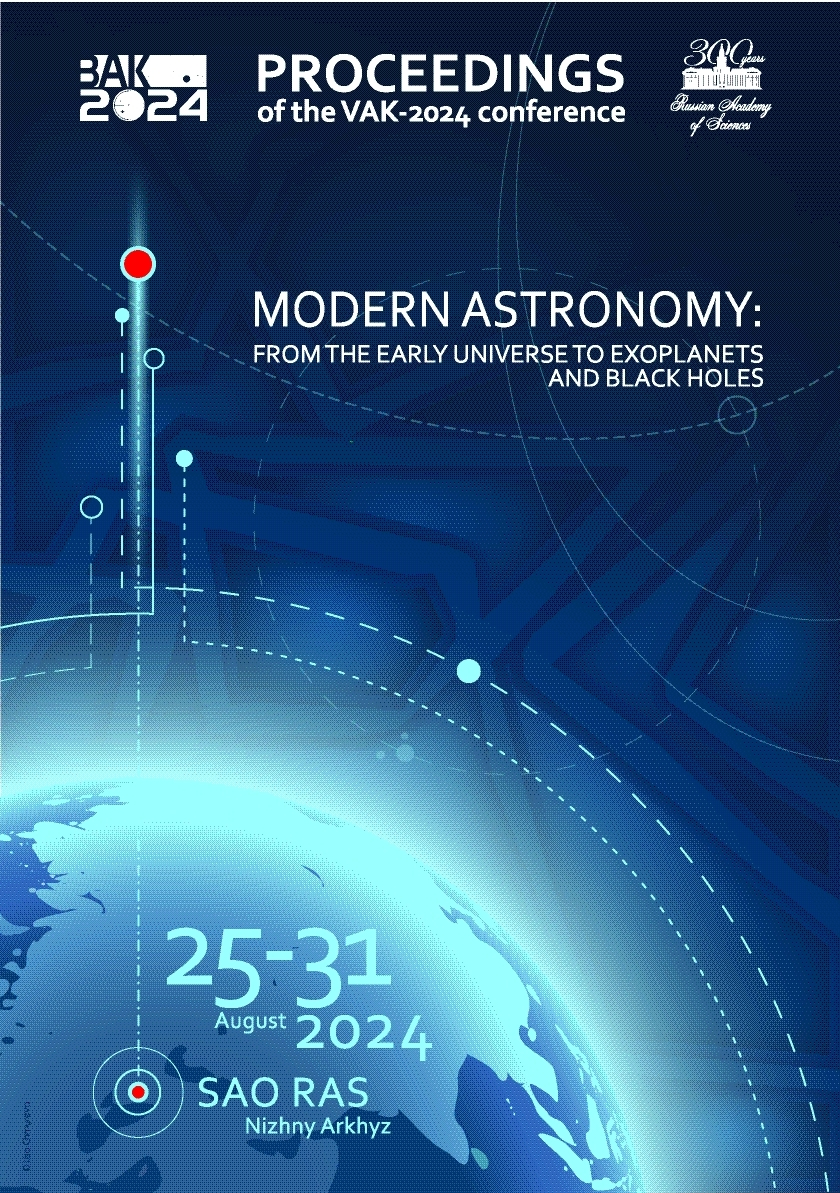УДК 53 Физика
УДК 520 Инструменты, приборы и методы астрономических наблюдений, измерений и анализа
УДК 521 Теоретическая астрономия. Небесная механика. Фундаментальная астрономия. Теория динамической и позиционной астрономии
УДК 523 Солнечная система
УДК 524 Звезды и звездные системы. Вселенная Солнце и Солнечная система
УДК 52-1 Метод изучения
УДК 52-6 Излучение и связанные с ним процессы
ГРНТИ 41.00 АСТРОНОМИЯ
ГРНТИ 29.35 Радиофизика. Физические основы электроники
ГРНТИ 29.31 Оптика
ГРНТИ 29.33 Лазерная физика
ГРНТИ 29.27 Физика плазмы
ГРНТИ 29.05 Физика элементарных частиц. Теория полей. Физика высоких энергий
ОКСО 03.06.01 Физика и астрономия
ОКСО 03.05.01 Астрономия
ОКСО 03.04.03 Радиофизика
ББК 2 ЕСТЕСТВЕННЫЕ НАУКИ
ББК 223 Физика
ТБК 614 Астрономия
ТБК 6135 Оптика
BISAC SCI004000 Astronomy
BISAC SCI005000 Physics / Astrophysics
We present the results of the spectroscopic monitoring of the Herbig Ae star HD 179218 carried out at the Shamakha Astronomical Observatory from 2015 to 2021 and the $UBVRI$ photometry at the Crimean Astronomical Observatory, covering the period 2007–2021. This object has a unique orientation of its rotation axis close to ``pole-on". The H$\beta$ line profiles are a single emission profile overlapped by blue and red absorption features living about several days. The 17 dates of 77 the H$\beta$ and the He I $\lambda$5876 line profiles demonstrated the inverse P Cyg-type profile with the variable velocity of the red edge of the absorption component up to 400 km/s. The period of the variations $P = 1.341 \pm 0.002$ days determined by Lafler–Kinman method is in accordance with the expected rotation period of the star. This observational fact can be a signature of the magnetospheric character of accretion in HD 179218. The inclination angle of the rotation axis is estimated as $i = 23^{\circ} \pm 3^{\circ}$. The observed phenomena can be connected with a specificity of stellar magnetism of HD 179218. Additionally, it has been shown that equivalent widths of the H$\alpha$ and H$\beta$ lines as well as the photometric $UBVRI$ parameters of HD 179218 demonstrate cyclic variability with several periods falling in the range from 19 days to 737 days. A possible interpretation of these phenomena can be a result of presence near HD 179218 of a low-mass binary component or exoplanets. A sudden drop of circumstellar extinction took place in October of 2011, possible interpretations of this phenomenon are considered.
stars: variables: Herbig Ae/Be, circumstellar matter; accretion; individual: HD 179218
1. Boccaletti A., Di Folco E., Pantin E., et al., 2020, Astronomy & Astrophysics, 637, id. L5
2. Finkenzeller U. and Mundt R., 1984, Astronomy and Astrophysics Supplement Series, 55, p. 109
3. Herbig G.H., 1960, Astrophysical Journal Supplement, 4, p. 337
4. Lafler J. and Kinman T.D., 1965, Astrophysical Journal Supplement, 11, p. 216
5. Leinert C., van Boekel R., Waters L.B.F.M., et al. 2004, Astronomy & Astrophysics, 423, p. 537
6. The P.S., de Winter D., Perez M.R., 1994, Astronomy and Astrophysics Supplement, 104, p. 315





